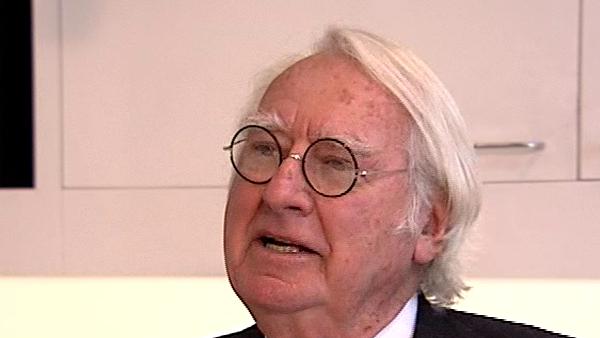NEXT STORY

Public clients versus private clients
RELATED STORIES

NEXT STORY

Public clients versus private clients
RELATED STORIES


|
Views | Duration | |
|---|---|---|---|
| 11. The problem with organic architecture | 508 | 03:16 | |
| 12. Le Corbusier's Modulor system | 1059 | 02:54 | |
| 13. A chapel in a meeting room | 179 | 02:35 | |
| 14. Why I developed the metal panels | 376 | 04:46 | |
| 15. Frankfurt and Atlanta: my first museums | 339 | 06:08 | |
| 16. My work in Germany | 133 | 05:18 | |
| 17. The Getty Center | 271 | 03:40 | |
| 18. Why it took 12 years to build the Getty Center | 198 | 01:59 | |
| 19. Public clients versus private clients | 229 | 02:12 | |
| 20. The postmodernism blip | 263 | 02:02 |


There’s a museum and they had a collection which was evolving... changing. There's something called the Center for the History of Art and Humanities, which is a place for scholars and probably the greatest art library in the world. There’s a Conservation Institute, which is not only conservation of works of art within the museum but, you know, how do... how do you preserve the mummies for the next 500 years? So it’s interested in conservation at every level and throughout the world. Then there’s an administration for the Getty and all of these different departments are, sort of, just beginning and trying to figure out what their mission is and what their space requirements are. And we only have so much space, so we have to, kind of, divide it up among the different entities of the Getty Trust and then there’s the public and so we have, you know, restaurant and cafeteria, and facilities for the public. And then, how do you get to the top of the hill because the building's at the top of the hill but there’s no room at the top to park the cars, so we had to park at the bottom of the hill and it’s a long way, you know, to ask people to walk. So we have to figure out the movement system from the bottom of the hill to the top of the hill and we have a tram, and all of these things. And then there’s a community and the community said to us, you know, we’re delighted that the Getty is going to build here. Whatever you do is fine as long as we can’t see it, and we can’t hear it and we can’t smell it. So they had their requirements. And it’s, sort of, balancing all of these different factors and trying to make everything come together that made it take that long.
The prominent American architect Richard Meier (b. 1934) is best known for the Getty Centre in Los Angeles, one of his many public projects which broke from his usual style of sleek, white buildings. In all his work – carried out with characteristic refined style – he refuses to bend to the trends of modern architecture. He has won many awards including the Pritzker Prize for Architecture, considered the field's highest honour.
Title: Why it took 12 years to build the Getty Center
Listeners: Massimo Vignelli
Massimo Vignelli was born in Milan and studied architecture in Milan and Venice. He is the co-founder and President of Vignelli Associates and Chief Executive Officer of Vignelli Designs in New York. His work includes graphic and corporate identity programs, publication designs, architectural graphics, interiors, furniture, and consumer product designs. His work has been published and exhibited throughout the world and entered in the permanent collections of several museums. He has taught and lectured on design in the major cities and universities in the United States and abroad. Included among Massimo Vignelli's awards are the Gran Premio Triennale di Milano, 1964, the Compasso d'Oro, awarded by the Italian Association for Industrial Design (ADI), 1964 and 1998, the 1982 Art Directors Club Hall of Fame, the 1983 AIGA Gold Medal, the 1992 Interior Product Designers Fellowship of Excellence, The 1995 Brooklyn Museum Design Award for Lifetime Achievement and The 2001 Russel Wright Award for Design Excellence.
Tags: Getty Center, Getty Trust, Center for the History of Art and Humanities, Conservation Institute, mummies
Duration: 1 minute, 59 seconds
Date story recorded: March 2007
Date story went live: 23 December 2008